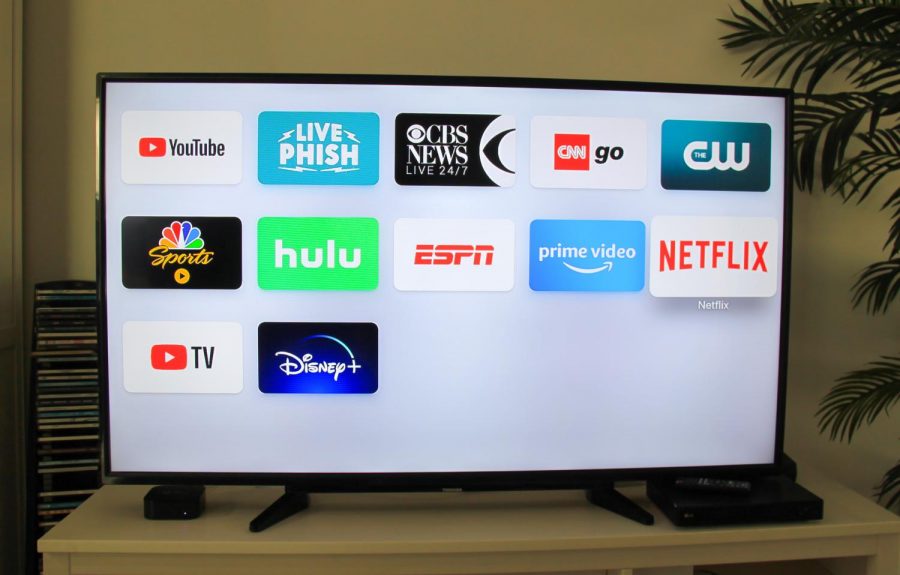As people wait to be admitted into a theater, nothing builds anticipation more than colorful Playbills, anxious audience members and bright flashing lights boasting a show’s title. Once they are in their seats, the proud, closed curtains command their attention just before the unbelievable talent emerges. Such an experience is truly something that cannot be replicated, yet due to the COVID-19 outbreak and subsequent social distancing, how can anyone watch the performing arts without leaving their houses?
Luckily, services and artistic companies, like The Met and PBS, are providing streaming services that bring high-quality plays and other performances to our computer screens. Yes, these programs provide an amazing opportunity to explore artistic facets that are typically inaccessible, but they also raise a concern. If we grow accustomed to watching any form of entertainment from our bedrooms, the possibility of the performing arts becoming entirely digital is not as far-fetched as we may think. With this in mind, now is an essential time to consider the advantages and disadvantages behind both forms of execution to recognize that one cannot replace the other.
While everyone should have access to the performing arts, our expensive world tends to wrongfully characterize them as exclusive through expensive ticket prices. Fortunately, streaming artistic performances promotes accessibility. By watching on a laptop, absurd ticket prices are immediately reduced or eliminated and commuting to a faraway theater is no longer necessary. Not only this, but the footage is high-quality, helping viewers feel as if they have front-row seats, even though they paid nowhere near what those seats would cost.
While film is for the screen, theater is for a stage. Theaters set the mood, creating a dramatic, almost luxurious experience the second audience members sit in their seats. They keep the drama contained, which makes each moment theatrical. Music beautifully resonates off of the stage, traveling from people’s ears down to their toes, and the immersive scenery transports people to the story’s realm. Whereas at home, a TV speaker’s fuzzy resonance, the slightly crooked picture on the wall and a sibling’s obnoxious chewing — something we are probably all too familiar with — take away from the overall experience.
In person, seeing more than two shows in a day is difficult to achieve. Most venues only offer matinee and evening performances, run a selection of shows and ticket prices for multiple performances add up quickly. Online performances allow a viewer to see an infinite amount of classic operas, ballets, musicals and even comedy acts in a short amount of time. People can then obtain a greater understanding and appreciation for the diverse types of performing arts.
Watching any sort of play, dance or comedy is undoubtedly a priceless experience, even if it is online. However, numerous streaming services only provide mainstream classics with big names. These types of performances are nostalgic and valuable, yet they do not typically support local theaters and their original content. If the performances become completely digital, this accessibility will jeopardize smaller productions and their artists, potentially leaving thousands of individuals unemployed and preventing innovative content from flourishing.
The performing arts are transformative because they intertwine personal narrative with performance, permitting audiences to connect with moments of individual instances. Everyone deserves to witness such impactful experiences without worrying about a price tag or distance. Yet, once these performances transfer online, the power, content and jobs theaters provide will disappear. So, as we currently spend more time at home, please take advantage of the abundance of entertainment that is available — but remember to support and attend live performances once the theaters open again.
Email Sasha Cohen at [email protected].

























































































































































